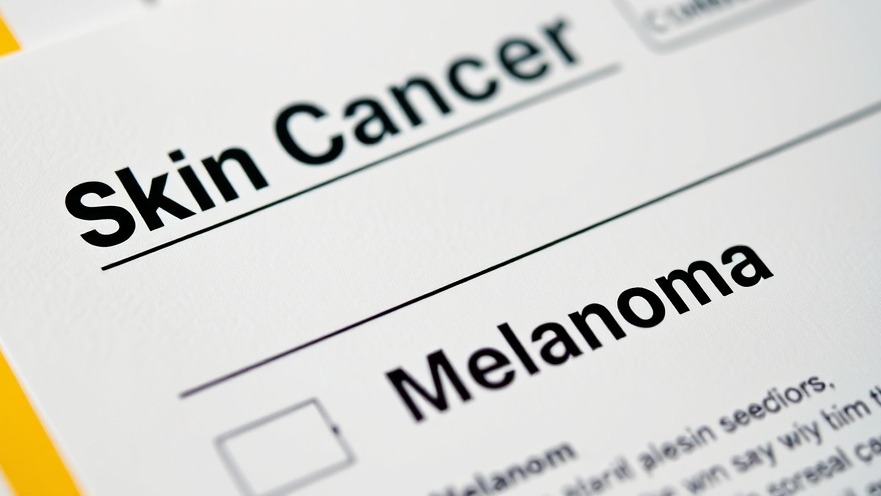
Understanding Topical Steroid Withdrawal: A New Diagnostic Approach
Topical steroids have been a cornerstone in treating various dermatological conditions such as eczema, psoriasis, and dermatitis. Recently, researchers at the National Institutes of Health (NIH) have taken significant strides toward defining the phenomenon known as topical steroid withdrawal (TSW). This condition has left many patients in a state of confusion and discomfort as they navigate a painful path away from steroids, often leading to a range of symptoms including redness, burning, and skin fatigue.
For parents grappling with the effects of steroid use on their children’s skin health, understanding TSW is critical. Traditional dermatological practices often lacked a unified set of criteria to diagnose TSW, which left both patients and their caregivers searching for clarity. The new research spearheaded by NIH aims to provide structured guidelines that can assist healthcare providers in recognizing and treating this condition more effectively.
The Symptoms: A Comprehensive Look
NIH’s recent findings emphasize the importance of recognizing symptoms associated with topical steroid withdrawal. The condition can manifest as severe skin irritation, inflammation, and sometimes even pustule formation following the cessation of topical steroids. Documented symptoms can vary, which further complicates diagnosis. Parents should be vigilant about these signs, especially if their children have a history of long-term topical steroid use.
Monitoring symptoms closely can enable parents to seek timely medical advice and possibly avoid long-term consequences. Researchers suggest that developing a standardized scale for TSW could help demystify patient experiences, ensuring that caregivers and healthcare professionals are on the same page.
Why Accurate Diagnosis Matters for Families
Establishing accurate diagnostic criteria not only aids in providing appropriate treatment options but also helps mitigate the psychological impacts of steroid withdrawal. Parents dealing with skin issues, especially in children, may experience anxiety and emotional distress associated with the unpredictability of their child’s skin condition. A clear roadmap provided through diagnostic criteria offers a sense of control.
Families can also benefit by engaging more effectively with dermatologists. They can prepare questions to ask their dermatologist, ensuring that they fully understand the diagnosis of TSW and the treatment options available. Knowledge is power, and having open, informative discussions with healthcare professionals can significantly improve outcomes.
The Importance of Nutritional Support for Skin Health
While researchers are focusing on the clinical aspects of TSW, it’s worthwhile to consider holistic approaches, including dietary support for skin health. Nutritional choices can play a substantial role in enhancing skin recovery. Parents should be aware of collagen-rich foods for skin, which may help improve skin elasticity and resilience. Foods such as bone broth, fish, and certain fruits can aid in boosting collagen production.
By incorporating healthy smoothies for glowing skin that include ingredients rich in antioxidants and vitamins, families can support their skin health from the inside out. Smoothies made with kale, spinach, fruits, and seeds can offer significant nutritional benefits necessary for skin repair.
Future Predictions and Trends in Dermatology
The evolving understanding of TSW presents a primer on future trends in skincare and dermatology that parents should watch closely. As new research continues to emerge, we may see more emphasis on non-invasive treatments and integrative approaches to managing skin health. This could significantly alter management strategies in pediatric dermatology.
Additionally, there's potential for emerging therapies that address both physical and emotional aspects of skin withdrawal. Increased awareness and advocacy may pave the way for more informative resources for parents, ensuring they’re equipped to navigate the complexities of skin health.
Final Thoughts: Empowering Families Through Knowledge
For parents, the journey through topical steroid withdrawal does not have to be undertaken in isolation. Awareness regarding the symptoms and diagnostic criteria sets the stage for more meaningful conversations with dermatologists. By combining this knowledge with healthy lifestyle choices, families can embark on a path to improved skin health. Whether through dietary changes like adding healthy smoothies for clear skin or exploring collagen-boosting options, every step counts toward holistic wellness.
As parents, advocating for your child’s skin health means staying informed and empowered. Encourage open dialogues with healthcare providers, foster healthy discussions about nutrition, and build resilience through knowledge. As we continue to understand the complexities of dermatological issues like topical steroid withdrawal, resources will become more accessible, paving the way toward healthier skin for future generations.
 Add Row
Add Row  Add
Add 




 Add Row
Add Row  Add
Add 

Write A Comment